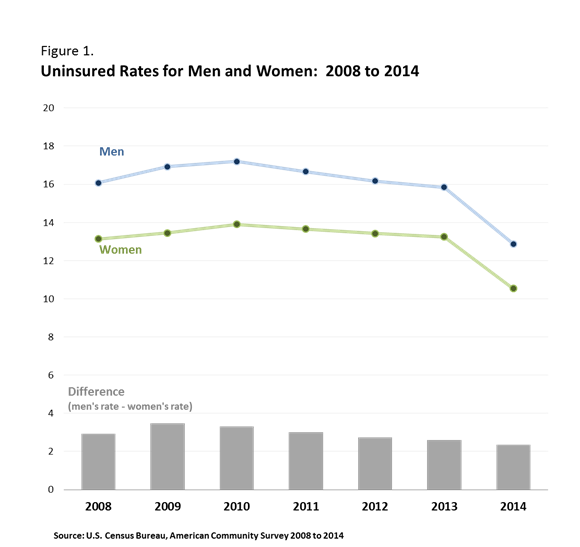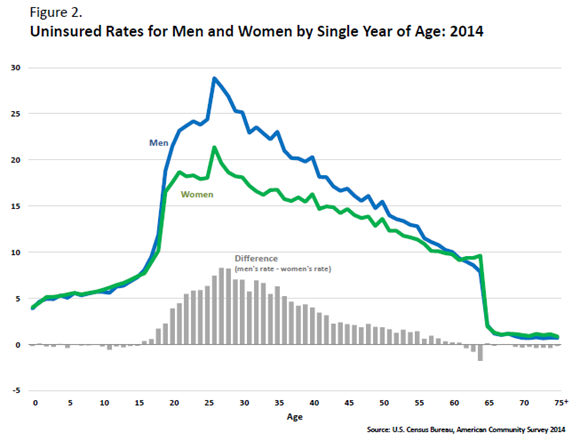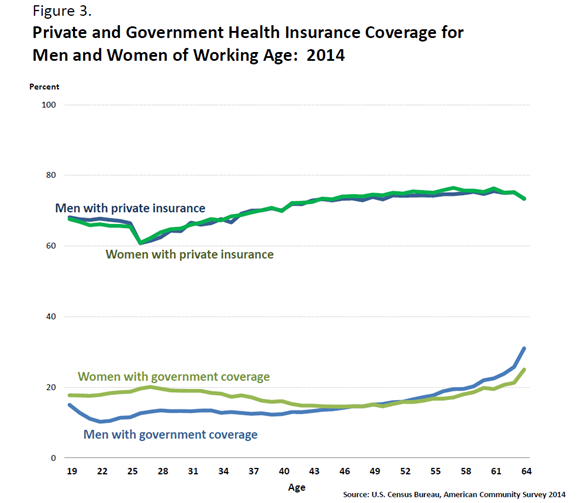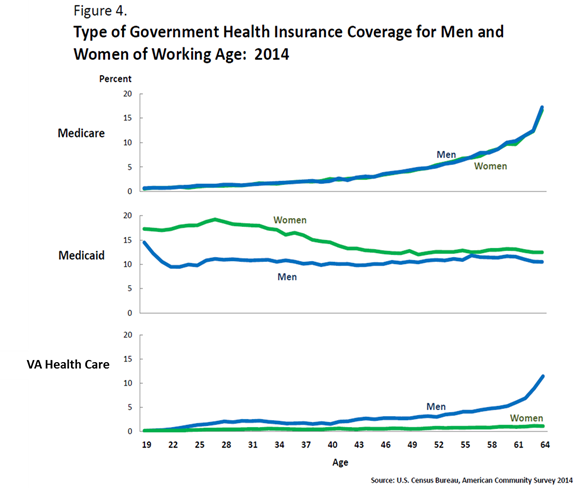
An official website of the United States government
Here’s how you know
Official websites use .gov
A .gov website belongs to an official government organization in the United States.
Secure .gov websites use HTTPS
A lock (
) or https:// means you’ve safely connected to the .gov website. Share sensitive information only on official, secure websites.
-
//
- Census.gov /
- Random Samplings /
- Another Difference Between the Sexes - Health Insurance Coverage
Another Difference Between the Sexes - Health Insurance Coverage
Another Difference Between the Sexes - Health Insurance Coverage
Men Lag Behind Women in Health Insurance Coverage
A higher proportion of men than women do not have health insurance. In 2014, the uninsured rate was 12.9 for men and 10.5 for women, a difference of 2.4 percentage points. Though the gap has shrunk since 2009, what remains represents a considerable difference in the realm of health insurance coverage (Figure 1).
For both sexes, the uninsured rate peaks at age 26, an age when children lose their health insurance coverage provided by their parents’ policies. The gap between men’s and women’s coverage rates appears to be entirely among people of working age, with the largest gaps among those in their late 20s and early 30s.
Government-provided health insurance coverage is made up of several distinct programs. Women and men share similar coverage rates from Medicare (which benefits mostly people with disabilities and people 65 and older). However, far more women than men receive coverage under Medicaid (which mostly benefits people with lower incomes), with the largest gaps in coverage appearing among men and women in their 20s and 30s.
Share
 Yes
Yes
 No
NoComments or suggestions?


Top




